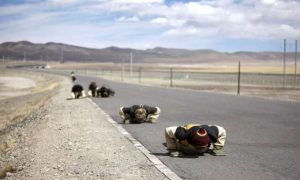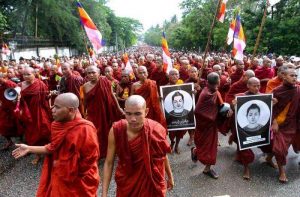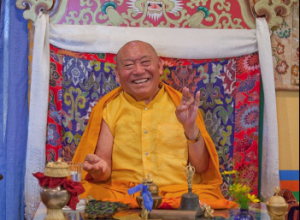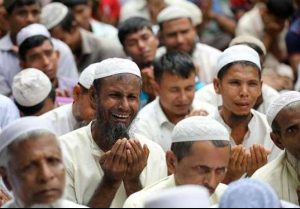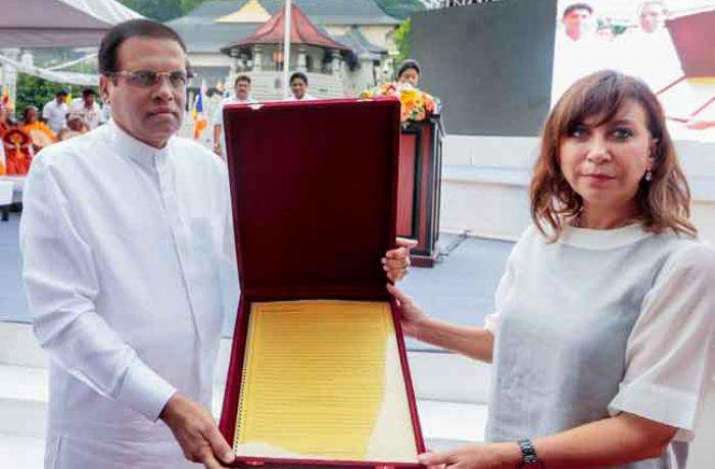
Sri Lankan President Maithripala Sirisena on 23 March presented a proposal to UN resident coordinator and UNDP Resident Representative in Sri Lanka, Hanaa Singer, to have the Tipitaka (Skt: Tripitaka) recognized as a UNESCO World Heritage.
The proposal was presented to the UN coordinator during a ceremony at the Maha Maluwa (Great Terrace) of the Temple of the Sacred Tooth Relic in Kandy. The event was also attended by Prime Minister Ranil Wickremesinghe, Minister Sajith Premadasa, former prime minister D. M. Jayaratne, other ministers and parliamentarians, and numerous monastic representatives.
The Tipitaka, also known as the Pali Canon, is the term used by Theravada Buddhists for the Buddhist scriptures. It consists of three parts: the Vinaya, the Sutta, and the Abhidhamma, which were composed between 500 BCE and the start of the Common Era. The Tipitaka and its commentaries were brought to Sri Lanka from India by the Arahat Mahinda Thera in the third century BCE. In 1956, the government of Sri Lanka printed all the scriptures as a series of books.
Addressing the audience at the ceremony, Sirisena stated that if the text is recognized as a UNESCO world heritage, the merit would fall on Sri Lanka, whose people are committed to “protecting [and] nurturing the Tipitaka—which includes the preaching of the Gautama Buddha—and preserving its writing for the world.” (AsiaNews.it)
The president also noted that although his plan to have the Tipitaka recognized as a world heritage had encountered opposition and doubt, he would make all necessary efforts to ensure that the initiative moved ahead successfully.
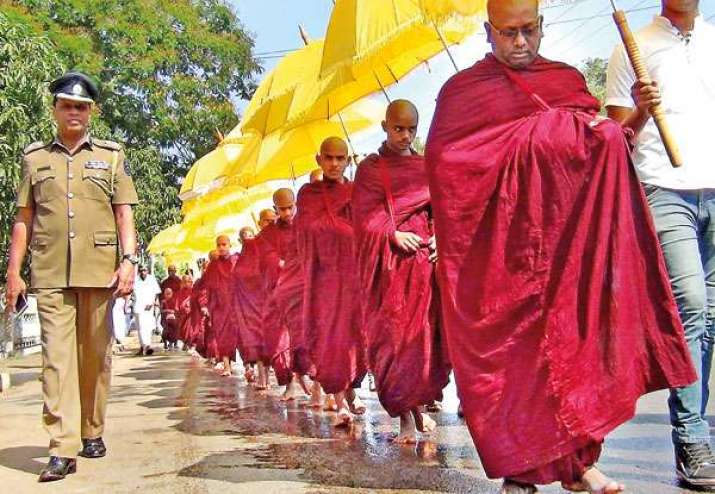
Recalling a statement about the importance of the preservation of the Tipitaka by the former Burmese prime minister U Nu in 1953, president Sirisena described the Tipitaka as the most important historical heritage of Buddhism and went on to relate how it was first preserved by orally then later recorded in text on ola leaves in Sri Lanka, before it was carved into stone, and later printed in books.
The Sri Lankan government declared the week before the ceremony, from 16–23 March,to be “Tipitakabhawindana Week.” During seven-day period, special programs were conducted at Buddhist temples and Dhamma schools around the country. Some 5,000 monks from participated in the events, aiming to make the entire island aware of the endeavor.
As a first step toward formal UNESCO recognition, Sirisena declared the Tipitaka a national heritage of Sri Lanka at Aluviharaya Temple in Matale, on 5 January.
Addressing those who had gathered, Sirisena stated that the Sri Lankan government would protect the Tipitaka from misuse and that no one would be allowed to issue it without approval from the government. He also noted that to prevent any damage or distortion of the texts, the Tipitaka could only be translated or edited by an officially appointed statutory academic council.
See more
Sirisena calls on UNESCO to recognise Buddhist canon as world heritage (AsiaNews.it)
Proposal to include the Theravada Tripitaka into the Memory of the World Register of UNESCO presented (Colombo Page)
President hands over proposal to declare Tripitaka as a World Heritage (Adaderna.lk)
Govt. declares special week to get Tripitakaya recognised as World Heritage (Daily FT)





